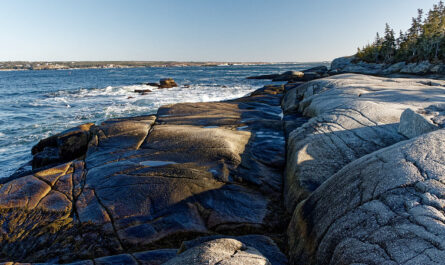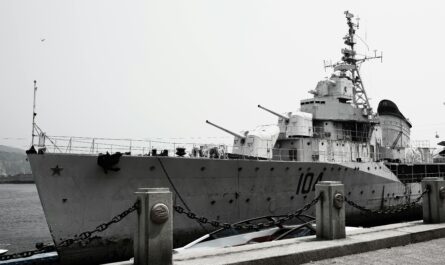The Atlantic Ocean, spanning over 41 million square miles, has been a central actor in the drama of human history. Its winds, currents, and vastness not only connected continents but also enabled the rise of global empires, the exploitation of resources, and the violent exchange of people and cultures. From the 15th-century voyages of European explorers to the 20th-century struggles for decolonization, the Atlantic’s geography dictated the terms of conquest, trade, and resistance. This article explores how the ocean’s natural forces, paired with human ambition, forged the modern world—a world built on the twin pillars of colonization and empire.
The Atlantic Ocean has never been a passive expanse of water. For over five centuries, its currents carried conquistadors and enslaved Africans, its storms sank treasure-laden galleons, and its horizons lured empires to expand their dominions. From the moment Christopher Columbus stumbled upon the Caribbean in 1492, the Atlantic became the lifeblood of European imperialism—a liquid highway for extracting wealth, enforcing subjugation, and reshaping societies across four continents. This article traces how the ocean’s geography, ecology, and navigational challenges forged the modern world’s political and economic hierarchies, leaving legacies that still ripple through global inequality today.
Empires rise and fall by their mastery of geography, and none shaped the course of history more profoundly than the Atlantic Ocean. Its winds determined the routes of slave ships, its depths hid the bones of countless Indigenous and African victims, and its shores became laboratories for colonial exploitation. To understand the birth of capitalism, the roots of racism, or the origins of globalization, one must look to the Atlantic. This vast body of water did not merely connect Europe, Africa, and the Americas—it fused them into a single, brutal system of power. Here, we unravel how the ocean’s natural forces and human ambition colluded to redraw the map of the world.
Before the Atlantic became a bridge, it was a barrier. For millennia, the Americas thrived in isolation, their civilizations unaware of the societies across the ocean. Europe, too, remained confined to its corner of the globe until the 15th century. But with the advent of maritime technology and imperial greed, the Atlantic transformed from a frontier into a thoroughfare. This shift triggered the largest ecological and demographic upheaval in human history: the Columbian Exchange, the transatlantic slave trade, and the rise of plantation economies. In this article, we explore how the ocean’s conquest by European powers rewired global ecosystems, economies, and cultures—and why its waves still echo with the unresolved traumas of colonization.
The story of the Atlantic Ocean is a tale of two truths. On one hand, it is a narrative of human ingenuity—of sailors braving uncharted waters, engineers perfecting shipbuilding, and merchants weaving global trade networks. On the other, it is a chronicle of violence: genocide against Indigenous peoples, the commodification of enslaved Africans, and the ruthless extraction of resources. These dual legacies are inseparable. The same currents that carried Enlightenment ideas of liberty also transported human cargo. The same ports that buzzed with cosmopolitan trade were built on racial hierarchies. By examining the Atlantic’s role in colonization, we confront the paradoxes of progress and the moral costs of empire.
What does an ocean remember? The Atlantic holds memories of resilience and rebellion—of Igbo captives drowning themselves to escape slavery, of Taino leaders resisting Spanish invaders, of Haitian revolutionaries shattering colonial chains. Yet it also bears witness to erasure: languages lost, ecosystems destroyed, cultures fragmented. This article is not just a history of empires but a reckoning with the ocean’s role as both witness and accomplice. From the first Portuguese caravels to the container ships of today, the Atlantic has been a mirror reflecting humanity’s capacity for both creation and destruction. Its history is our history, and its waves still carry the echoes of choices that shaped our world.
The Age of Exploration: Navigating the Unknown
The story of Atlantic-driven colonization begins with Europe’s Age of Exploration. By the 15th century, Portugal and Spain sought to bypass Ottoman-controlled land routes to Asia. The Atlantic’s wind systems, particularly the North Atlantic Gyre, became critical to their success. Portuguese navigators like Henry the Navigator pioneered the use of the volta do mar (“turn of the sea”), a technique that leveraged circular ocean currents to sail westward into the open Atlantic before catching easterly winds back to Europe. This innovation allowed Christopher Columbus, funded by Spain, to reach the Caribbean in 1492. Though he mistakenly believed he had found Asia, his voyage marked the beginning of sustained transatlantic contact. The Atlantic was no longer a barrier but a corridor—one that would soon facilitate the transfer of people, pathogens, and power.
The Spanish and Portuguese Empires: Gold, God, and Glory
Spain and Portugal dominated early Atlantic colonization through the Treaty of Tordesillas (1494), which divided the non-European world between them. Spain’s conquests in the Americas—led by figures like Hernán Cortés (Aztec Empire) and Francisco Pizarro (Inca Empire)—relied on steel, horses, and disease. Smallpox and measles, introduced by Europeans, decimated Indigenous populations, with mortality rates exceeding 90% in some regions. The extraction of silver from Potosí (modern Bolivia) and gold from Mexico funded Spain’s global ambitions, shipped across the Atlantic in guarded treasure fleets. Meanwhile, Portugal established Brazil as a sugar colony, using enslaved Indigenous labor before turning to Africa. The Atlantic became a highway for wealth, but this wealth was built on genocide and ecological devastation.
The Rise of Northern European Powers: England, France, and the Dutch
By the 17th century, England, France, and the Netherlands challenged Iberian dominance. The Atlantic’s strategic choke points—like the Strait of Gibraltar and the Caribbean Sea—became battlegrounds. England’s colonization of North America (Jamestown in 1607, Plymouth in 1620) focused on settler agriculture and displacement of Native peoples. The Dutch, masters of maritime trade, seized Caribbean islands like Curaçao and Suriname to control sugar production. France, meanwhile, exploited the cod fisheries of Newfoundland and the plantation economies of Saint-Domingue (Haiti), which would become the world’s richest colony by the late 18th century. These empires relied on the Atlantic’s winds to sustain the Triangle Trade: European goods to Africa, enslaved Africans to the Americas, and raw materials like sugar and tobacco back to Europe.
The Transatlantic Slave Trade: The Ocean’s Darkest Legacy
No aspect of Atlantic history is more harrowing than the Middle Passage. Between the 16th and 19th centuries, over 12.5 million Africans were forcibly transported across the ocean, with nearly 2 million dying en route. European ships, designed to maximize human cargo, followed the Atlantic’s “trade winds” westward to the Americas and returned via the “westerlies.” The ocean’s vastness normalized cruelty: enslaved individuals were packed like cargo, subjected to disease, and thrown overboard during revolts. The profits from slavery funded Europe’s Industrial Revolution, with cities like Liverpool and Bordeaux thriving on the trade. African societies were destabilized by the loss of people, while the Americas became sites of cultural fusion—Afro-Caribbean religions, Creole languages, and resistance movements like Jamaica’s Maroon Wars.
The Columbian Exchange: Rewiring the Globe’s Ecology
The Atlantic facilitated the Columbian Exchange, a biological revolution that reshaped diets, economies, and ecosystems. Crops from the Americas—maize, potatoes, tomatoes—revolutionized European and Asian agriculture, boosting populations. Wheat, sugarcane, and horses flowed westward, transforming Indigenous lifeways. But the exchange was catastrophically unequal. European diseases (smallpox, measles) wiped out Native populations, creating a labor vacuum filled by enslaved Africans. The introduction of invasive species, like rats and earthworms, disrupted local ecosystems. Meanwhile, the Atlantic’s role as a “bridge” enabled the global spread of commodities like chocolate, tobacco, and coffee, which became staples of European daily life.
Maritime Technology: Mastering the Atlantic’s Challenges
Navigating the Atlantic demanded innovation. Early caravels and carracks gave way to galleons, armed ships capable of carrying treasure and troops. The development of the astrolabe, magnetic compass, and marine chronometer allowed sailors to calculate longitude, turning the ocean from a mysterious abyss into a mapped space. Lighthouses like England’s Eddystone and Spain’s Torre de Hercules safeguarded shipping lanes. Naval supremacy became synonymous with imperial power: the British Royal Navy’s dominance, secured by victories like the 1805 Battle of Trafalgar, ensured control of Atlantic trade routes into the 19th century.
The 19th Century: From Sail to Steam, Colonies to Nations
Industrialization transformed the Atlantic’s role. Steamships replaced sails, reducing voyage times and increasing cargo capacity. The 1838 SS Great Western became the first purpose-built transatlantic steamer, symbolizing a new era. The telegraph (first transatlantic cable laid in 1858) enabled instant communication between continents, tightening economic and political bonds. Meanwhile, the Monroe Doctrine (1823) asserted U.S. dominance in the Americas, while European powers turned to Africa and Asia. Yet the Atlantic remained central: the Haitian Revolution (1791–1804), the first successful slave revolt, inspired anti-colonial movements, while World War I and II saw U-boats and convoys battling for control of supply routes.
Environmental Impact: Exploitation and Consequences
Empires reshaped the Atlantic’s ecology. The Gulf Stream, a warm current moderating Europe’s climate, allowed agriculture in regions like Ireland. Caribbean sugar plantations caused deforestation and soil depletion, while overfishing in the Grand Banks decimated cod populations. The ocean’s role in the Little Ice Age (1300–1850), possibly linked to the genocide of Indigenous Americans, shows its climatic influence. Today, rising sea levels and plastic pollution threaten the Atlantic, a legacy of centuries of human exploitation.
Decolonization and Legacy: The Atlantic in the Modern World
Post-1945, the Atlantic witnessed decolonization, as nations like Jamaica (1962) and Angola (1975) gained independence. Yet economic dependency persisted: former colonies remained tied to global markets shaped by colonial extractivism. The Atlantic Alliance (NATO) reinforced U.S.-European hegemony during the Cold War, while offshore oil drilling (e.g., North Sea) and container shipping (e.g., Port of Rotterdam) underscored the ocean’s ongoing economic importance. Migrant boats from West Africa to Europe now retrace Middle Passage routes in reverse, highlighting enduring inequalities.
Conclusion: An Ocean of Contradictions
The Atlantic Ocean’s history is one of paradox. It unified the globe through trade and cultural exchange but divided it through slavery and exploitation. Its winds carried Enlightenment ideas of liberty alongside shackled human beings. Today, debates over reparations, climate justice, and migration remind us that the Atlantic’s legacy is unresolved. To study this ocean is to confront the roots of modernity—a system built on both ingenuity and inhumanity, forever shaped by the relentless motion of its waves.



